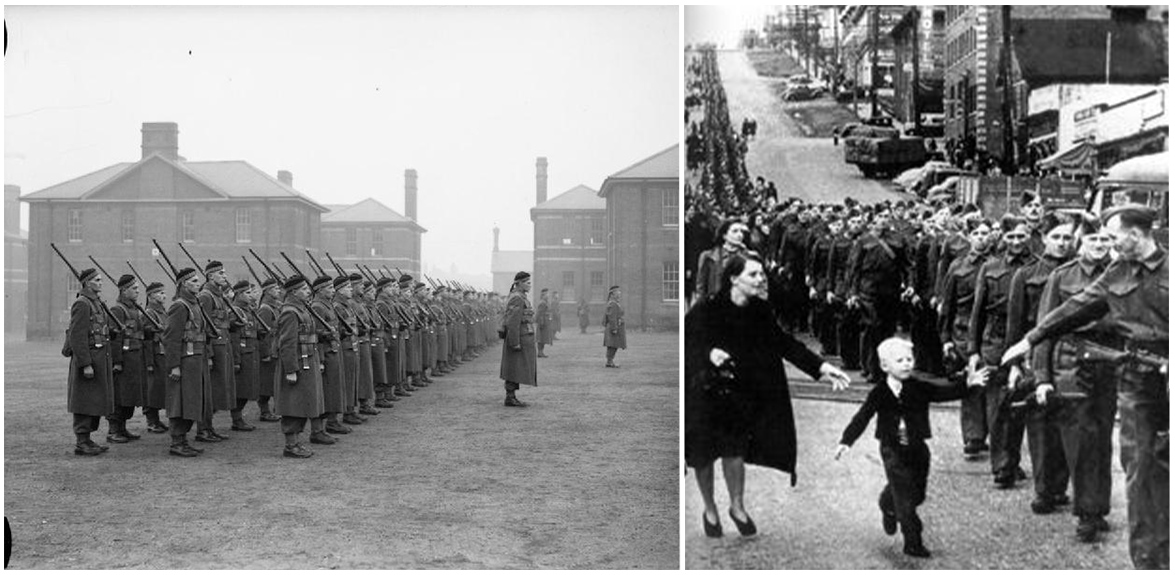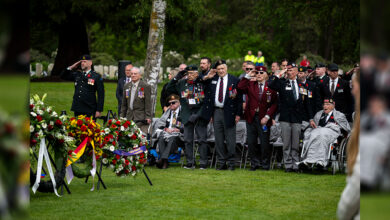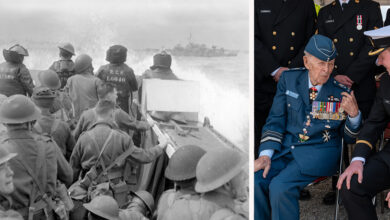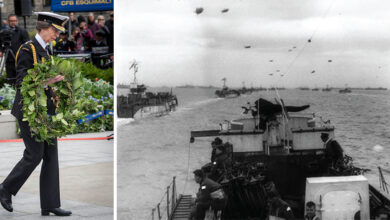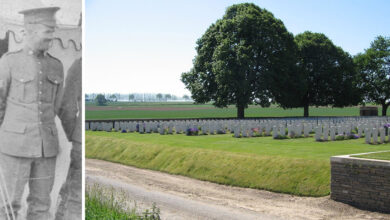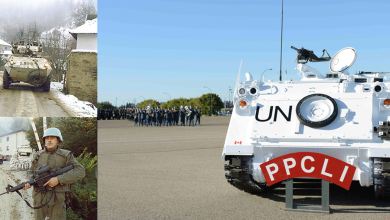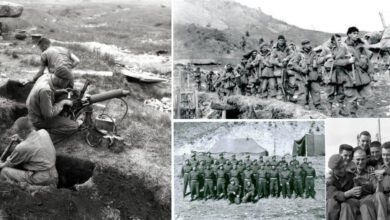History
Commemorating Canada entering the Second World War 81 years ago
Above image: see cutlines below.
This week marked Canada’s entry into the Second World War.
Following the Declaration of War made by England and France on September 3, 1939, Canada officially declared war on Germany on September 10, 1939.
The war came at a high cost for Canada as over 45,000 Canadians lost their lives, and 55,000 were wounded.
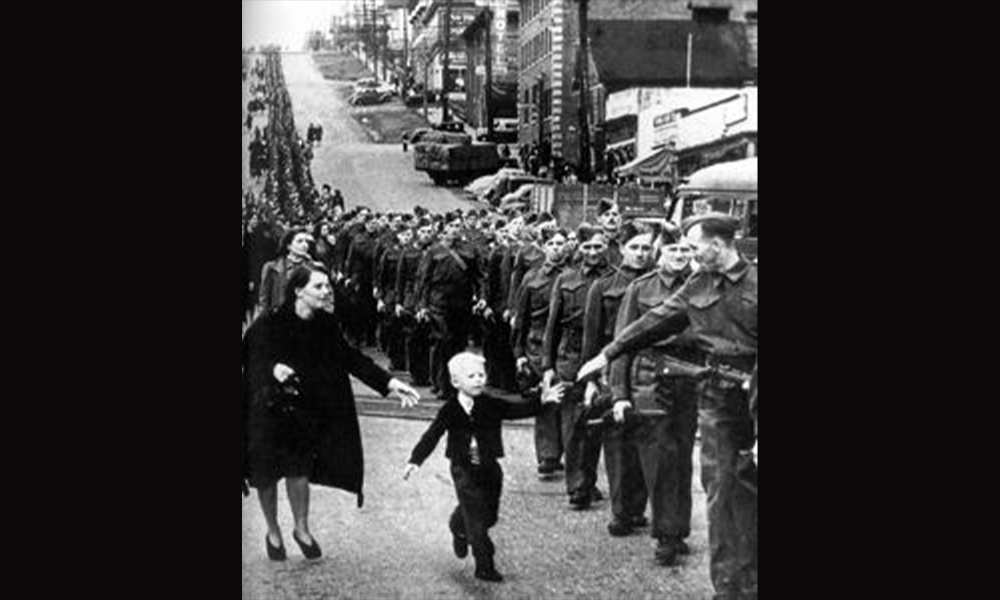
“Eighty-one years ago today, Canada entered the Second World War, joining its allies in opposing tyranny, and in an effort to restore peace.
“That peace would not be quick in coming. For nearly six years, war raged around the world – on land, in the air, and at sea. More than one million Canadians and Newfoundlanders would serve in uniform, and millions more would play their part here at home,” said Lawrence MacAulay, minister of veterans affairs and associate minister of national defence in a statement.
“On the beaches of Normandy and the mountains of Italy; in the skies over North Africa and on the waters of the North Atlantic, and battlefronts from Hong Kong to our own shores, they showed – time and time again – the bravery under fire that earned them the respect of allies and adversaries alike.
…peace would not be quick in coming. For nearly six years, war raged around the world – on land, in the air, and at sea. More than one million Canadians and Newfoundlanders would serve in uniform, and millions more would play their part here at home,” said Lawrence MacAulay, minister of veterans affairs and associate minister of national defence in a statement.
“On the home front, War became a national effort; women entered the workforce in huge numbers, and Canadian business and industry mobilized to manufacture vital war materials for the Allies. Every day, Canadians chipped in to support the war effort,” stated MacAulay.
Beginning the war with 13 vessels and 3,500 sailors, Canada’s Navy grew to include 373 ships and more than 110,000 sailors, and by the end of the war, it was one of the world’s largest navies.
During the war, the navy’s primary duty was to act as a convoy to escort ships across the Atlantic, around the Mediterranean Sea, and to Murmansk in the USSR. The navy also hunted submarines and supported landings in Sicily, Italy, and Normandy.
Air Force members served in Canada and Europe. Those stationed in Canada had the mission to hunt German U-Boats in the North Atlantic. While overseas, 48 Canadian Squadrons were stationed in Europe, where they served with Allied forces.
In regards to women, according to Veterans Affairs Canada, over 50,000 women served in the military. The Canadian Women’s Army Corps (CWACs), the Royal Canadian Air Force – Women’s Division (WDs), the Women’s Royal Canadian Naval Service (Wrens), and Nursing Sisters offered women the opportunity to serve their country.
Women that stayed home and manned the Homefront “extended their charitable work to the war effort,” noted VAC website.
At least 3,000 Aboriginal Canadians volunteered to serve in the Second World War. Sixteen Canadians were awarded the Victoria Cross for most conspicuous bravery in the presence of the enemy during the War.
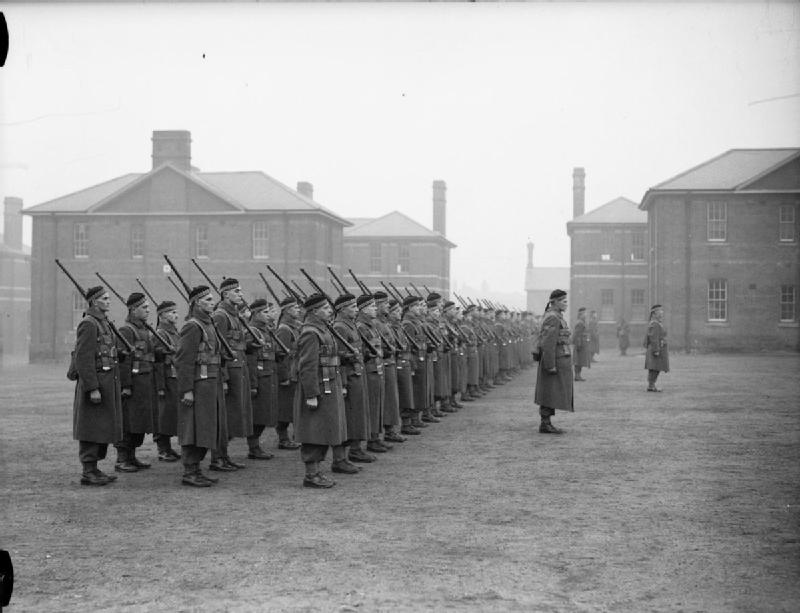
As for the army, at the beginning of the war, Canadian troops arrived in the United Kingdom, supplementing the British Expeditionary Forces (BEF).
Forestalled by the evacuation of the British Army from Dunkirk and the Channel ports, Canada’s role became one of defence of the British Isles.
In 1941, a small force of Canadians arrived in Hong Kong in time to meet the Japanese invasion and fought with the British, Indian, and Hong Kong forces in defence of the colony until the Japanese surrender on Christmas Day 1941.
Troops of the Canadian 2nd Division formed the bulk of the Dieppe Raid on August 19, 1942. Known as the single bloodiest day of the war for Canadian troops of the 5,000 Canadians that took part, only about 2,000 returned to England: nearly 1,000 had lost their lives, and 2,000 were taken prisoner.
By September 3, 1943, a combined Canadian, British and American force made the first full-scale invasion of mainland Europe, attacking the ‘toe’ of Italy and reaching Naples by October 1. Canadian troops fought at Ortona and Monte Cassino and, in May 1944, took part in the attack on the Hitler Line, which was the first major operation by a Canadian Corps in the War. The battle north through Italy continued to the end of the war and cost the lives of nearly 6,000 Canadians.
“By War’s end, more than 45,000 Canadians and Newfoundlanders had lost their lives. More than 55,000 were wounded. Countless others would return home, forever altered by their experiences in uniform,” stated MacAulay.
The landing in Normandy on June 6, 1944, D-Day, was a turning point for the Allies and Canadians played an important role in the battle to take Caen.
After taking Caen, they advanced along the French coast to the Pas-de-Calais and took Dieppe on September 1, 1944. From there, Canadians fought with British soldiers in the freeing of the Scheldt Estuary, and success here enabled the first Allied convoy to arrive in Antwerp in November 1944.
By February 1945, the Canadian First Army attacked the Reichswald Forest and helped drive the Germans back across the Rhine.
Canadian troops played a prominent part in the Netherlands’ liberation, as other troops went on to participate in the Battle of Germany.
“By War’s end, more than 45,000 Canadians and Newfoundlanders had lost their lives. More than 55,000 were wounded. Countless others would return home, forever altered by their experiences in uniform,” stated MacAulay.
In closing, he stated, “But the courage they showed – that Canadian legacy of service and sacrifice – helped lay a foundation for the world we are able to enjoy today. We remain forever grateful. Lest we forget.”
The Second World War officially ended on May 8, 1945, in Europe (V-E Day) and on August 15, 1945, in the Pacific (V-J Day)


